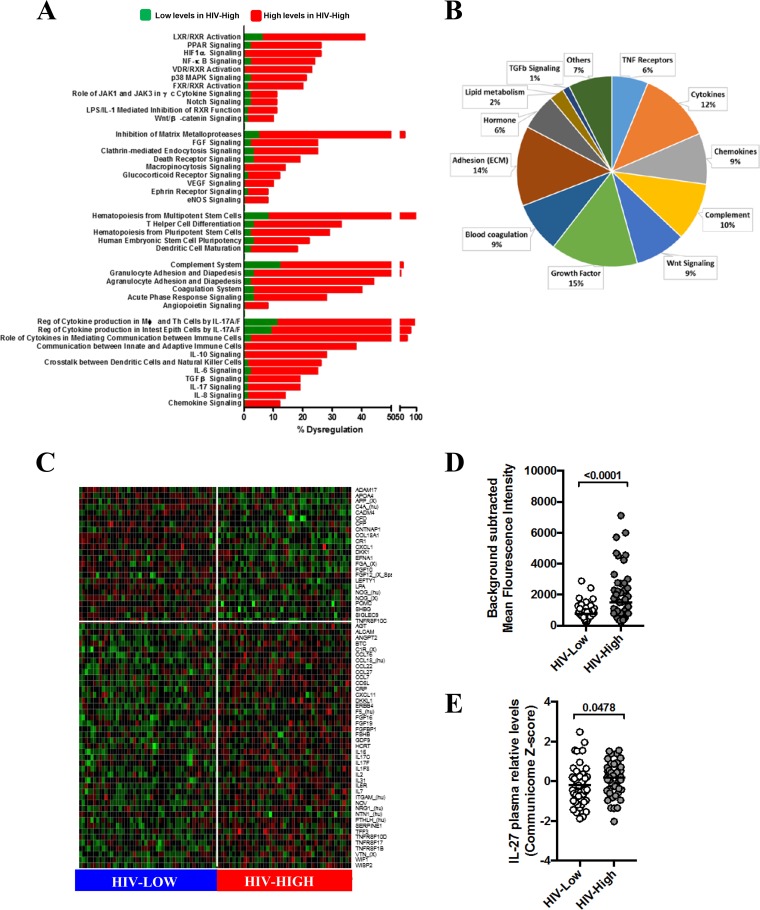FIG 1.
Communicome pattern profiles associated with control of HIV replication. Communicome analysis was performed in 96 HIV-infected individuals with high (HIV-High; n = 47) and low (HIV-Low; n = 49) HIV plasma viral load in the absence of ART. (A) The percentage of soluble factors with significant differential plasma levels (P < 0.05) between HIV-High and HIV-Low is shown for the most severely dysregulated canonical pathways. Elevated and reduced plasma levels of communicome factors in HIV-infected patients with high viral loads are marked in red and green, respectively. PPAR, peroxisome proliferator-activated receptor; MAPK, mitogen-activated protein kinase (MAPK); FGF, fibroblast growth factor; VEGF, vascular endothelial growth factor; eNOS, endothelial nitric oxide synthase; TNF, tumor necrosis factor; FXR, farnesoid X receptor; LXR, liver X receptor; VDR, vitamin D receptor; RXR, retinoid X receptor; ECM, extracellular matrix; MWU, Mann-Whitney U test. (B) Pie charts indicating Gene Ontology Biofunction representation of Top80 factors with significant differences (MWU, t test, and false discovery rate of <0.1) between HIV-High and HIV-Low. (C) Heatmap of top 80 soluble factors identified by univariate analyses that provided the most stringent stratification of HIV-High and HIV-Low (red color indicates higher protein plasma levels, and green indicates lower protein plasma levels). (D) IL-27 mean fluorescence intensity levels (5 replicates) detected at 488-nm absorbance in communicome in HIV-Low and HIV-High groups after background subtraction from mean foreground. (E) IL-27 relative expression levels measured in communicome in HIV-Low and HIV-High groups after Z-score normalization of all the chip data. Mann-Whitney test was applied for group comparisons, and P values of <0.05 were considered significant.

